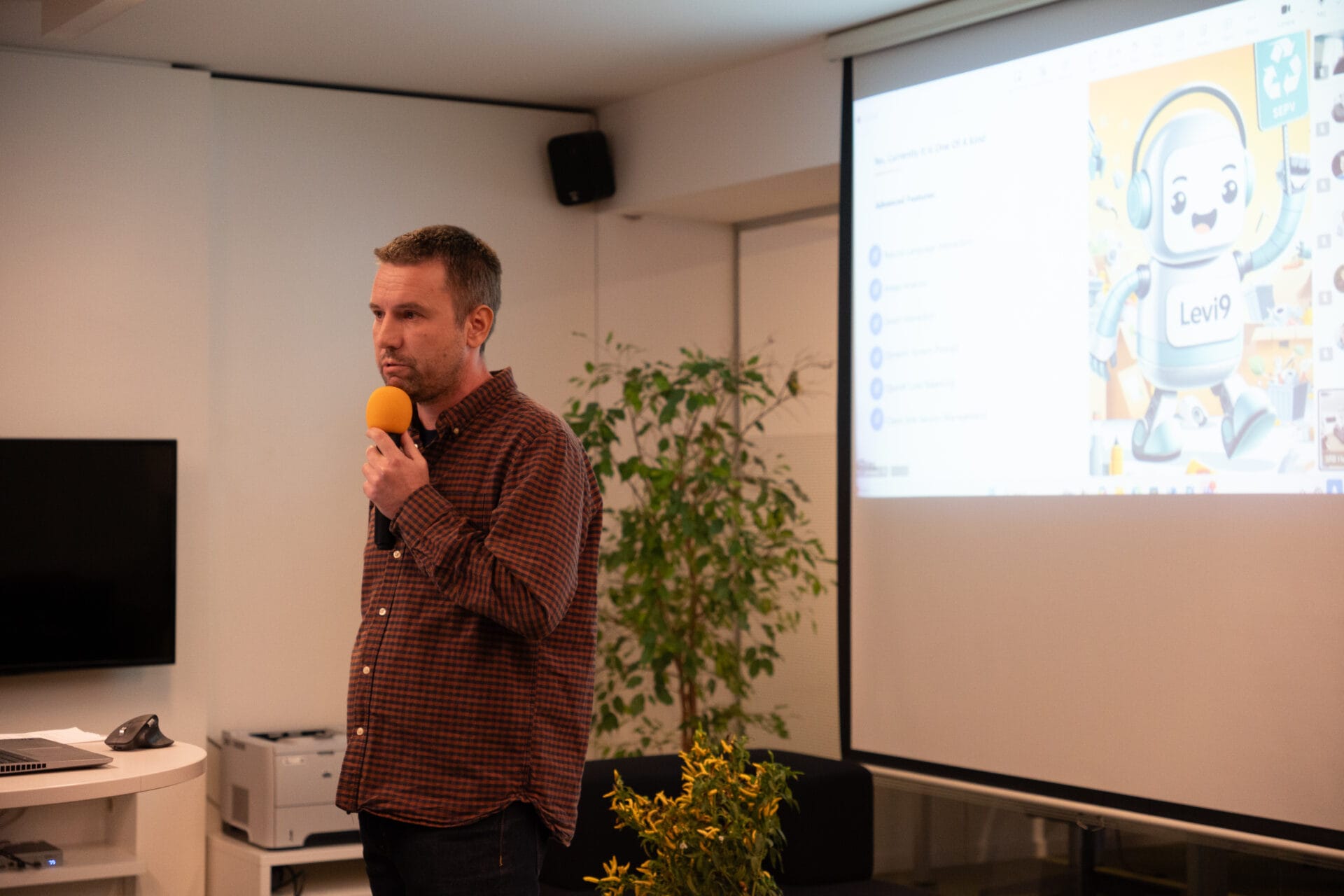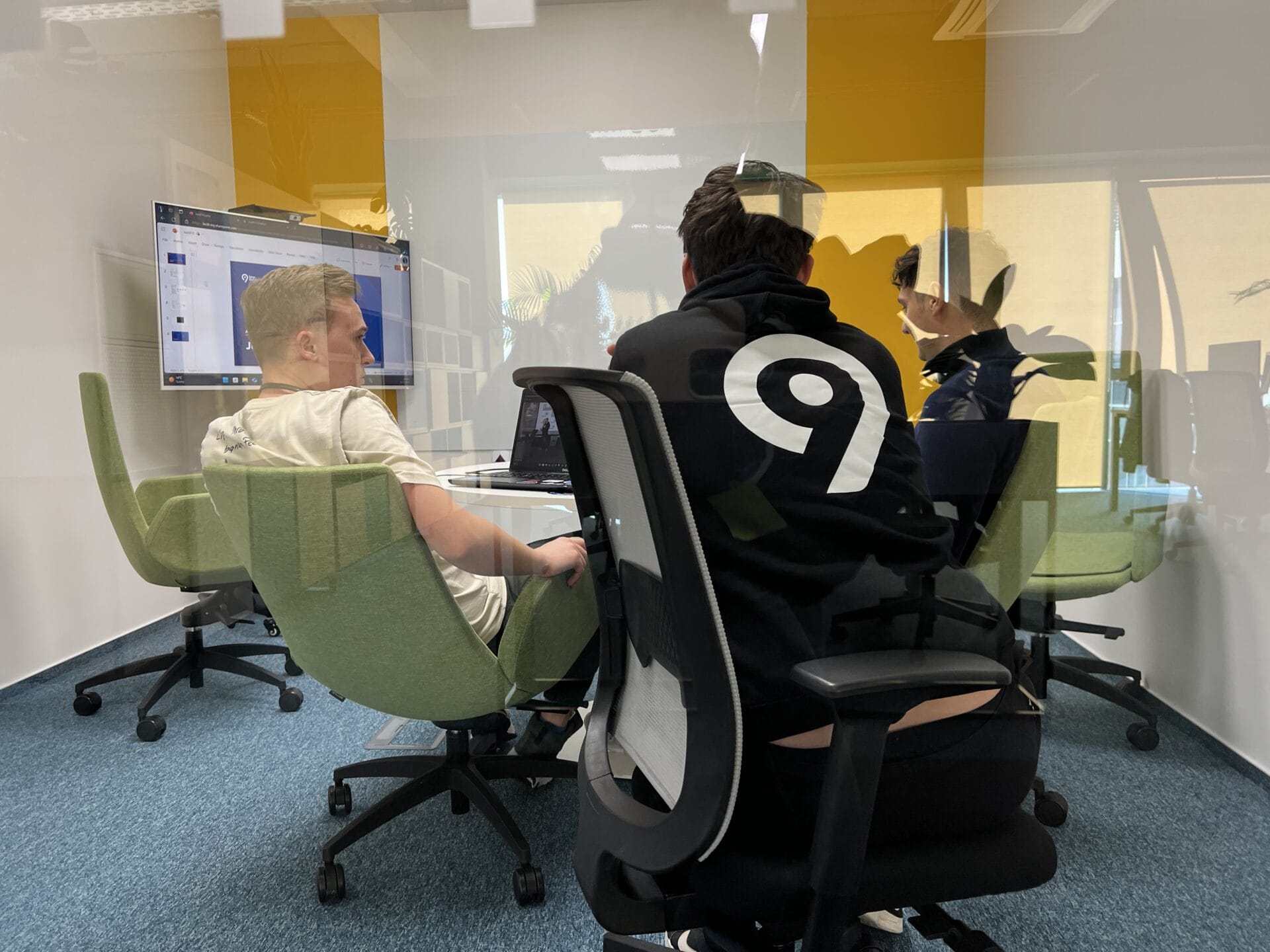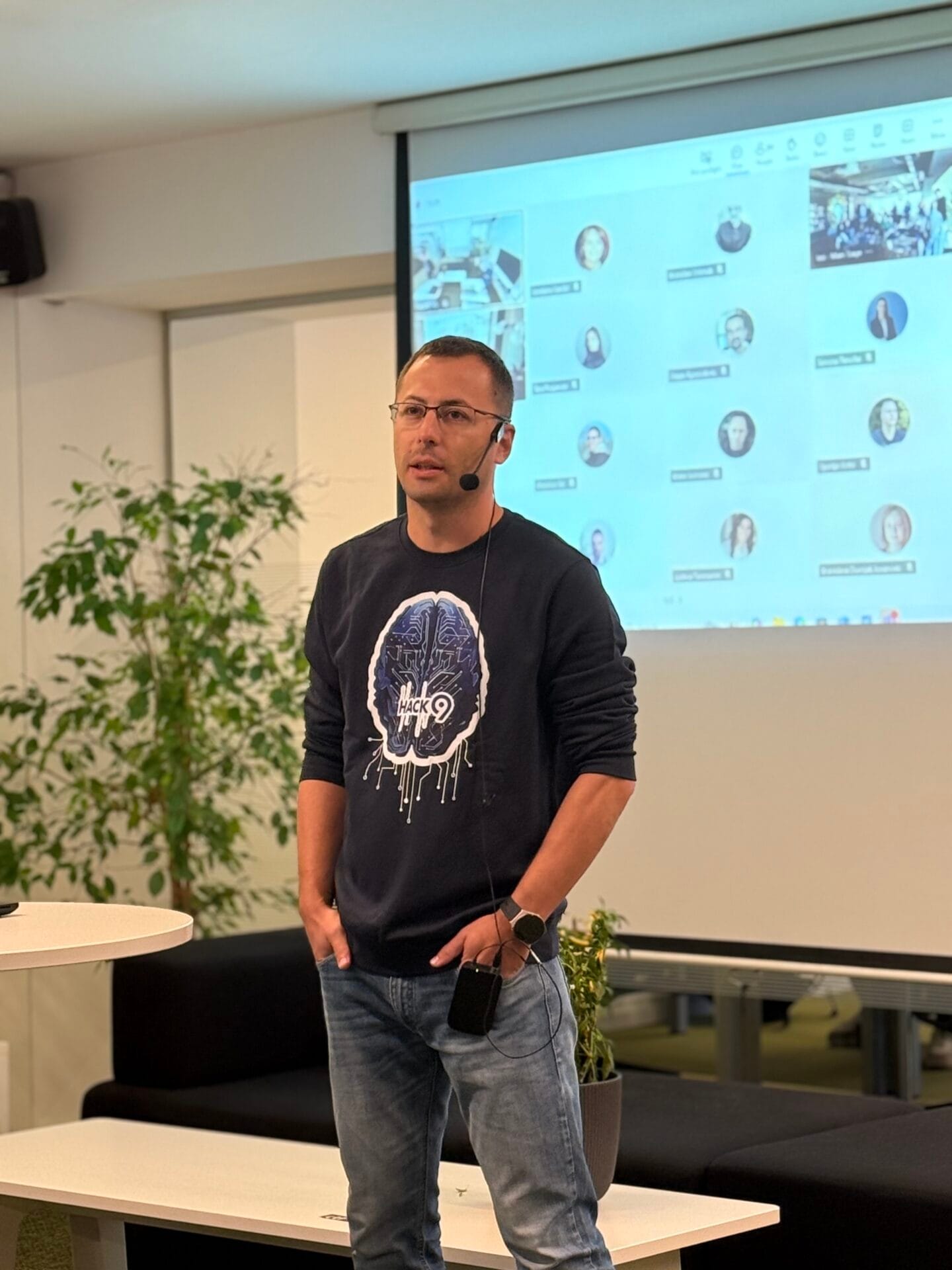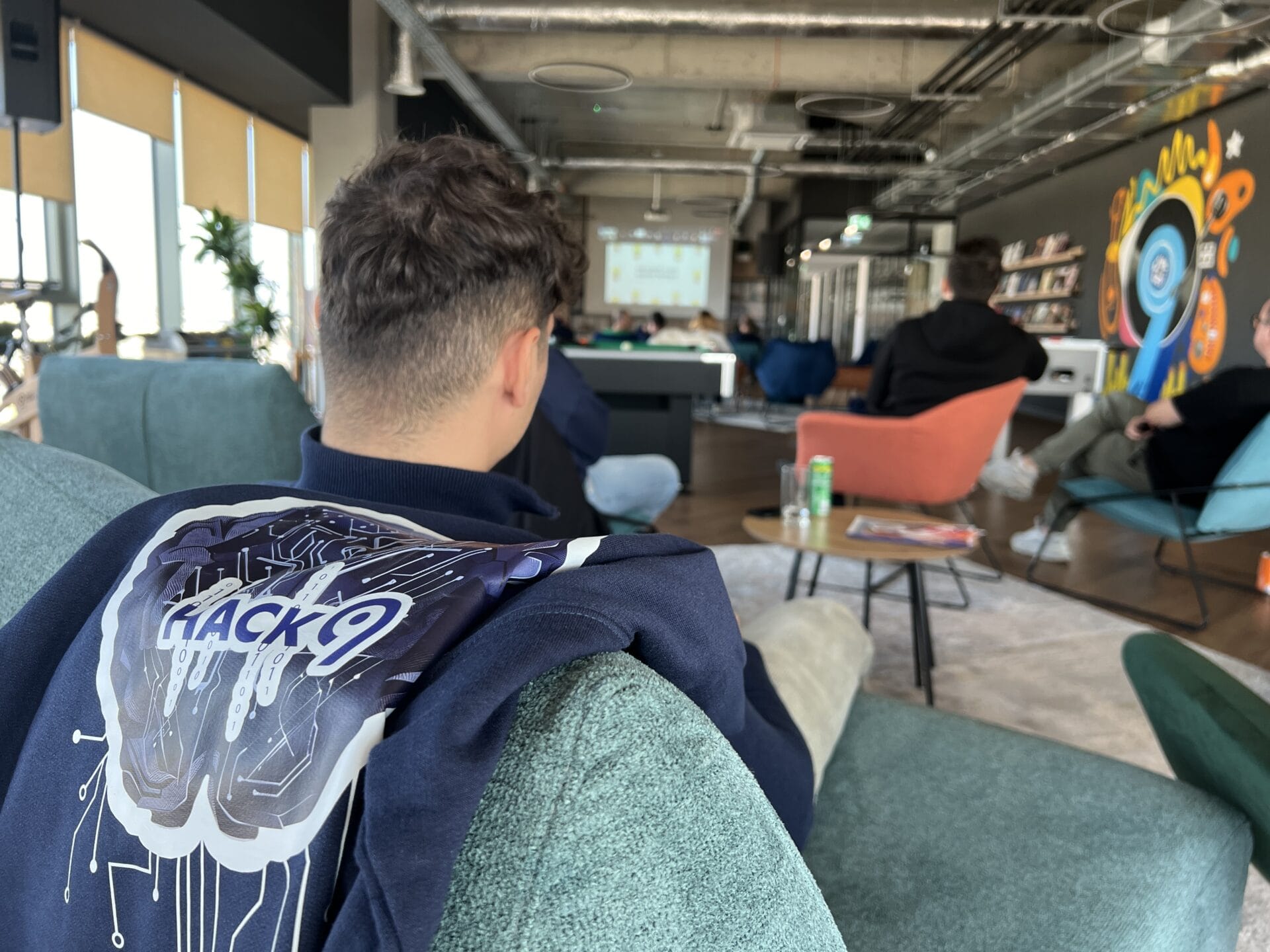Hack9, the annual hackathon organized by Levi9 for eight consecutive years, has become synonymous with innovation and an exciting platform to test the latest technologies in a dynamic setting. But, Hack9 is more than just a hackathon. It’s an immersive experience where levi niners from all our offices and customers unite to innovate, collaborate, and build impactful solutions. From 21st to 25th of October, teams tackled real-world challenges using the latest in Generative AI technologies. For experienced developers, data scientists, or simply techies passionate about AI, Hack9 offered the perfect platform to showcase skills, learn new things, and create groundbreaking projects.
This year’s event focused on one of the most talked-about fields today: artificial intelligence (AI), marking its second year in a rxow as the main theme. While 2023 featured AI Computer Vision, 2024’s spotlight turned to Generative AI.
The hackathon gathered nearly 100 levi niners from all Levi9 delivery centers and developers from clients’ teams, spread among 18 competing teams. Top scored teams “RecyclAi,” “PathsGuide,” and “Ctrl+Alt+Defeat,” demonstrated the potential of AI in diverse applications. The hackathon also emphasized the importance of collaboration and learning, with participants gaining valuable insights and skills through engaging workshops and hands-on experience.
Notably, AI also served as a judge, evaluating the winning and serving justice with cold but unbiased determination.

AI as Judge: Fair and Data-Driven
Throughout the years, Hack9 has iterated over many different types of judges – from mathematical scores, public voting systems, to specially-selected human judges. This year, however, we decided to take on a fresh approach, aligned with the hackathon topic.
Generative AI has been in rapid growth over the past couple of years. As our competing teams would explore its usage and benefits in a myriad of topics, we decided to see how well Generative AI would perform as a Judge for said projects. While there were many obvious upsides and risks, our vision remained to take a leap and see its performance in action.
Considering the AI judge would be, in the first place, unbiased, we gave it the symbolic name “Themis”, after the Greek goddess of justice.
Our goal was to create an AI agent-powered system that would score anonymous hackathon entries without any human intervention. While there were infinite approaches to creating such a system, the one we settled on revolved around a 3-pass principle. This allowed us to properly score the following traits:
- How well was the project presented?
AI agent determines whether the speaker delivered their idea coherently, and focused on the right things. - How well was the project done individually?
Project documentation and summary was scored in the following topics: usefulness, inovation, technical quality, completeness and UX/UI Design. - How does the project score compare to the rest of the competitors?
The AI agent will perform a comparative analysis, evaluating all projects against each other.
The AI judge assessed presentation transcripts in multiple iterations, focusing on predefined evaluation criteria such as innovation, usability, technical quality, and more. Each parameter was weighted, while personal identifiers like names or locations were excluded to ensure unbiased scoring.
- The first pass: Presentation transcript
The input for the 1st AI pass is the presentation transcript. As the entire event was streamed via Teams, we relied on Microsoft’s transcription technology. This is where the AI judges individual presentations and produces a summary for the 2nd AI pass.
- The second pass: Scoring individual categories
Other than the presentation skills, there were 5 additional traits we used to describe the success of a project. They were scored in the 2nd pass, witch’s input was the README file (documentation, in this case), UI/UX images, and the presentation summary created in the 1st pass.
The documentation played an important role in scoring the projects, as this is where the teams had unlimited space to write about their implementation, thought-process, technologies, and future plans.
Each category (including the presentation from the first pass) was rated 1-10. Individual categories rated in the 1st and 2nd pass are later calculated together. However, not all the categories are weighted the same. Categories were, in the order of their importance, the following: usefulness, inovation, technical quality, completeness, presentation and UX/UI Design.
In addition to giving individual category scores, the 2nd pass also creates a summary based on which the 3rd AI agent will compare projects together.
- The third pass: Comparing all projects
The input for the 3rd pass is all project summaries, without inputting team names, or any other details other than about the project itself. The AI agent will perform a comparative analysis, evaluating all projects against each other and ranking them – the 1st place being the best. With the adjustments, top-rated projects would receive a small boost to their scores, the boost being proportional to their rank.
With the final scores adjusted, our winning teams had been determined.
The overall experience of both creating the AI judge and later seeing its work in action was very interesting. Most importantly, it taught us a bit more about how the AI approaches certain topics, and what are its positive and negative sides when it comes to judging projects.

RecyclAi: An AI-Powered Solution for Smarter Recycling
The winning team from Serbia – Milan Kojadinovic, Marko Tatic, Milan Bajic and Stefan Milankov – created RecyclAi, a web application leveraging AI to help users sort recyclable waste correctly.
Our concept, RecyclAi, is an innovative web application that leverages the power of artificial intelligence to help users sort recyclable waste correctly. The purpose of RecyclAi is simple yet impactful: to provide an intuitive tool that educates and motivates users to recycle properly, contributes to environmental conservation, and fosters a culture of ecological responsibility. At the core of our solution lies artificial intelligence. Using Azure OpenAI services, we built an intelligent system capable of recognizing waste types and offering useful advice about their recycling potential. By processing user inputs - whether text descriptions or images - the application identifies the type of waste and provides recommendations for proper sorting.
Stefan Milankov, .Net Software Developer
“The Generative AI technology we implemented allows RecyclAi to learn from user inputs and provide detailed explanations about the recycling process. This ensures that every interaction not only guides the user but also educates them about sustainable practices. Through this approach, RecyclAi enables users to engage in recycling effortlessly while increasing their awareness of how their actions impact the environment.
We combined technologies like React, Python, and Azure OpenAI to build a solution that educates users, solves real problems, and positively impacts the world. We realized the power of combining various technologies. Additionally, working on a project that contributes to the greater good gave us extra motivation and inspiration”, Stefan says.
Inspired by their success, the team envisions making RecyclAi available to the public.

PathsGuide: Empowering Personalized Learning through AI
Second place goes to PathsGuide project, created by levi niners Pavlo Malitov, Tatiana Sakharova and Oleksandr Rapota, based in Ukraine. This is an innovative AI-powered platform designed to create personalized learning roadmaps. Tailored for individuals seeking structured paths and organizations aiming to upskill teams, PathsGuide customizes its approach by analyzing users’ goals, knowledge, and preferences.
The result is an adaptive step-by-step plan that evolves as users progress, ensuring efficient and focused learning journeys. Artificial intelligence drives PathsGuide’s core functionality.
We use AI to analyze user inputs and generate personalized learning paths. We also utilize generative UI to dynamically create question forms. This allows us to clarify user requests and understand precisely what they want to learn. By generating customized questions in real-time, LLM gather accurate information about the user's goals and preferences, enhancing the personalization of their learning roadmap. We’ve considered integrating it into AI Buddy, our internal digital career assistant project. However, there’s still more work to be done before it’s ready for release.
Pavlo Malitov, JavaScript Developer
Reflecting on this year’s journey, he said: “Even with a very small team and limited time, we realized we could still create a great product. Prioritizing features and quick decision-making were key, and none of it would have been possible without a well-coordinated team.” Hack9 demonstrated that small, focused teams could make big ideas come to life, and I’m incredibly grateful for the opportunity.
Ctrl+Alt+Defeat: Democratizing Data Search
Third place went to Ctrl+Alt+Defeat, a team of three Levi9 developers from Zrenjanin – Dejan Veljkovic, Zeljko Urban, Stevan Stanimirovic, who had a support of two interns. Their project stemmed from a commercial concept they’d been exploring.
The idea originated from one of Levi9's projects. We recognized the potential of using AI for searching specific data. Since the backend they use for storage and search is open-source, we decided to enhance it with AI capabilities.
Dejan Veljkovic, DevOps Engineer
“Artificial intelligence was primarily used in the search process for datasets. The solution is based on the concept of Retrieval-Augmented Generation (RAG). We embedded metadata about the datasets we store or reference, then passed it to large language models (LLMs). The result was information about datasets containing specific data.
Initially, the idea was to make this extension open source so that the relevant community could continue its development, and clients could implement it in their projects. However, a significant challenge we encountered—still unresolved—was the incompatibility of certain dependencies. The software we worked on has existed for a long time, and many of its libraries lag behind the latest versions. On the other hand, the AI libraries we used for development, being relatively new, primarily rely on the latest versions of dependencies.”
From this perspective, a more generalized approach to creating an AI solution for search—detached from a specific application—seems like a more sustainable direction. While we cannot guarantee immediate availability, such a solution might be accessible in the future”, explains Veljković.
Knowledge Sharing: A Core Hack9 Value
In line with Levi9’s culture, Hack9 was preceded by workshops aimed at sharing knowledge and experiences. These sessions are essential for fostering professional growth.
“Hack9 brings together technology enthusiasts. It’s an opportunity to push boundaries, try new approaches, and enjoy the process,” says Jan Dolinaj, Levi9’s CTO and a co-founder of Hack9.
Series of engaging workshops were designed and delivered to inspire participants and equip them with practical AI knowledge. In the first one, How to Spot a Good AI Idea, participants explored how to identify impactful AI-driven solutions across industries, using practical frameworks to evaluate their feasibility and business value. The session also featured insights from real-world AI applications and industry success stories, providing attendees with the tools to assess and pursue innovative ideas effectively. It was held by Dario Djurica, Software Architect and Dragisa Djuric, Delivery Manager.
This hands-on workshop “Using LLMs Locally with Ollama and LMStudio” offered practical experience in deploying large language models (LLMs) locally. Participants learned how to use tools like Ollama and LMStudio to run AI models on their own hardware, unlocking benefits like enhanced privacy, faster response times, and greater customization. Speaker was Ihor Kozlov, Tech Lead.
“AI Undercover: The Secret World of Intelligent Agents” was the third session, led by Zarko Bakurski, Software Developer. This session delved into the transformative potential of multi-agent AI systems, particularly in customer service. Attendees were introduced to Microsoft’s AutoGen framework, gaining insights into how multi-agent conversations and orchestration power AI applications. The workshop also addressed challenges in implementing text-to-SQL features, making it a must-attend for those looking to enhance business operations with intelligent AI agents.
AI's Role in Transforming the Market
Dario Djurica, Software Architect and Hack9 Project Leader, emphasizes the rapid evolution of AI in the tech landscape:
“Although it seems like the market is saturated with AI ideas, there are still countless unexplored opportunities. A year ago, almost no companies had GenAI solutions. Today, that number is growing exponentially. By next year, 75% of software solutions are expected to include AI technologies.”

Looking Ahead: Will You Join the Next Step?
Hack9 2024 offered participants a unique chance to experiment with AI and explore cutting-edge technologies in a relaxed and creative environment. As the future promises even more exciting and challenging projects, the only question left is: Will you be part of the next step?











